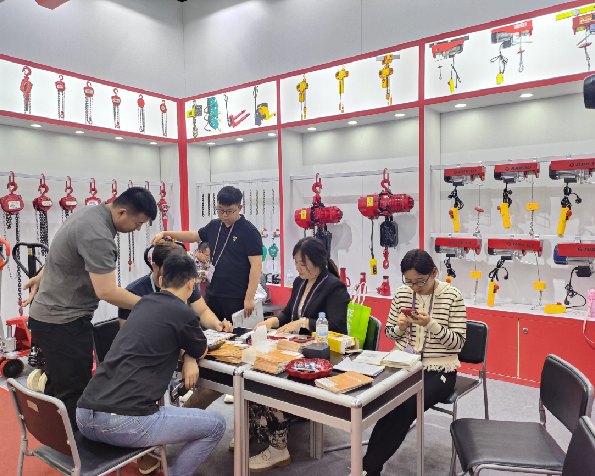


Understanding the Working Principle of Chain Hoists
Chain hoists are essential tools in various industries, often used for lifting and lowering heavy loads with efficiency and precision. Their popularity stems from their mechanical simplicity, reliability, and effectiveness in heavy-duty applications. To appreciate how chain hoists operate, it is crucial to understand their fundamental working principle.
Basic Components of a Chain Hoist
Before delving into the working principle, let’s look at the basic components of a chain hoist. A typical chain hoist consists of the following parts
1. Chain The lifting medium that carries the load. 2. Drum or Wheel A wheel over which the chain runs. This is where the lifting mechanism is housed. 3. Ratchet and Pawl Mechanism This prevents the load from falling when the operator releases the handle or lever. 4. Hook A strong hook which securely holds the load during lifting operations. 5. Gearbox It aids in transmitting the force applied by the operator to the drum or the chain.
The Working Principle
The working principle of a chain hoist is based on mechanical advantage, which allows a small force applied to the handle to lift large loads. Let’s break down this process
1. Application of Force The operator begins by pulling on the hand chain or lever. This action generates torque and rotates the drum around its axis.
2. Chain Movement As the drum rotates, the chain winds up around it. The design of the drum and the arrangement of the chain ensure that when the chain is pulled on one side, it translates this movement into upward motion on the other side.

3. Raising the Load When the chain lifts, the hook at the end of the chain rises along with the load it is holding. The geometry of the hoist ensures that the load is distributed evenly and safely.
4. Locking Mechanism Activation When the operator ceases to pull on the hand chain, the ratchet and pawl mechanism kicks in. This feature locks the drum in place, preventing the load from falling back down due to gravity. The pawl engages with the ratchet teeth, ensuring that the load remains suspended until the operator decides to lower it.
5. Lowering the Load To lower the load, the operator typically has to release the ratchet mechanism. Once disengaged, a controlled descent can be achieved by pulling gently on the chain in the reverse direction. This action allows the chain to unwind from the drum, lowering the load safely and gradually.
Advantages of Chain Hoists
Chain hoists offer several advantages that make them indispensable in various settings
- High Load Capacity Chain hoists can lift heavy weights that manual methods may not handle safely. - Versatility They can be used in various applications, from construction sites to warehouses. - Cost-Effective Despite their robust capabilities, chain hoists are relatively affordable and require minimal maintenance. - Space-Saving Design The vertical lifting motion means they occupy very little footprint, making them ideal for limited spaces.
Conclusion
The chain hoist is a testament to effective mechanical design, relying on fundamental physics principles to lift substantial loads safely and efficiently. By understanding its working principle, users can appreciate not only the functionality of the device but also the safety measures necessary to operate it correctly. With proper training and adherence to operational guidelines, chain hoists can significantly enhance productivity in numerous industrial settings. Their blend of simplicity, efficiency, and power continues to make them a vital tool in the modern workplace.



